Automated data entry leveraging tools like OCR, RPA, AI and NLP minimize data entry errors and help overcome the limitations of manual data entry processes. By using data entry automation for form filling and by identifying data entry error sources with data validation rules, data entry companies can improve data accuracy and ensure seamless handling of data.
Contents
- Understanding Common Manual Data Entry Errors
- Challenges Businesses Face Due to Manual Data Entry Errors
- Benefits of Automated Data Entry Systems
- 5 Manual Data Entry Errors You Can Eliminate with Automation
- Types of Data Entry Automation Techniques and Tools
- Steps to Implement Data Entry Automation
- Challenges of Automating Data Entry
- Outsourcing Data Entry as a Solution
- Future Trends in Data Entry Automation
- Conclusion
Manual data entry errors have a significant impact on business operations. From incorrect data capture to inconsistent formatting, there can be a huge number of errors that can creep into data entry processes and reduce data accuracy. In fact, bad data costs the U.S. economy over $3 trillion annually, with businesses potentially losing up to 25% of their revenue due to poor data. Additionally, the cost of fixing a single data error can exceed $100 if left unresolved.
The good news? Automated data entry can help address the issues associated with manual data entry. Reducing human involvement helps streamline data entry processes and improve data accuracy. However, this shift in approach to data entry isn’t without its implementation challenges and associated complexity.
Partnering with reliable data entry companies can ease this transition, ensuring best practices are followed and will help organizations utilize the full benefits of automating data entry solutions.
Understanding Common Manual Data Entry Errors
Manual data entry involves inputting data into a system or database by hand, typically using a keyboard. This process usually includes transferring information from physical documents, spreadsheets or other sources into digital formats. While straightforward, it is prone to errors such as typos, omissions and inconsistencies due to human involvement. It can also be time consuming and inefficient, especially when dealing with large volumes of data, leading to increased chances of inaccuracies.
These data entry errors must be avoided, as they often result in faulty analysis, compromised decision-making, and operational inefficiencies. The main sources of manual data entry errors stem from human errors, inadequate validation procedures, and a lack of standardization in data entry processes. Without proper validation rules or consistency, businesses face a higher risk of accumulating data inaccuracies over time. To reduce these risks, it is essential to adopt solutions that improve data accuracy and minimize human input.
Challenges Businesses Face Due to Manual Data Entry Errors
As data volumes grow, the risk of human error also rises, further complicating reporting and decision making. To avoid these challenges, businesses must explore solutions that reduce manual rework, streamline processes, and improve data accuracy, ultimately ensuring more efficient and reliable operations.
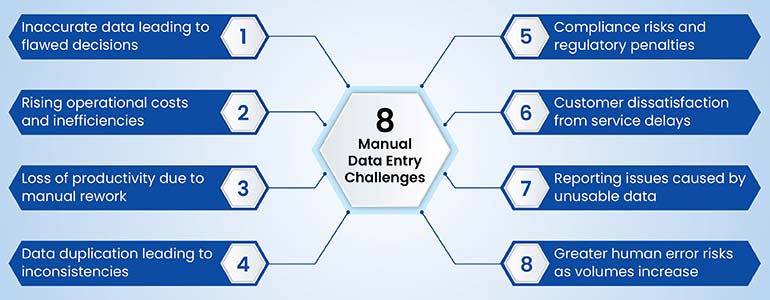
Reduce errors – automate now for better accuracy and efficiency!
Get a FREE Quote »Benefits of Automated Data Entry Systems
These challenges hamper business performance and data quality, and this is where automated data entry systems come into play, offering a range of benefits and improving operational efficiency.
- Improved Accuracy: Automation tools drastically reduce human errors, ensuring that data is reliable and consistent.
- Increased Efficiency: Automated systems speed up data entry processes, allowing businesses to process large volumes of data quickly without sacrificing quality.
- Cost Reduction: By reducing errors and the time spent correcting them, automation leads to significant cost savings.
- Scalability: As businesses grow, automated data entry systems can easily scale to handle larger data volumes without additional staffing.
5 Manual Data Entry Errors You Can Eliminate with Automation
Manual data entry errors can be avoided through automation. Let’s explore five common errors and how automation can resolve them:
Error – 1 Typographical Mistakes

Manual Entry Issue: Manual data entry often leads to data entry errors like typos in names, numbers and other crucial data. These errors, stemming from human oversight, can cause problems such as incorrect invoices or misplaced records, impacting data accuracy.
Automated Solution: Automated data entry with Optical Character Recognition (OCR) systems minimizes data entry errors by accurately capturing data from documents and forms. AI-driven OCR systems further enhance data accuracy by validating extracted data against predefined formats (e.g., social security numbers and addresses) and alerting users to discrepancies. This automation streamlines data entry processes and reduces the risk of manual data entry errors.
Industry Example: A financial services company processing numerous loan applications daily faced challenges with manual data entry errors in applicant names and loan amounts, leading to processing delays. Implementing an AI-powered OCR system automated their data entry processes, eliminating these errors and enabling real-time data validation. This improved data accuracy, streamlined operations and enhanced customer satisfaction.
Error – 2 Inconsistent Formatting
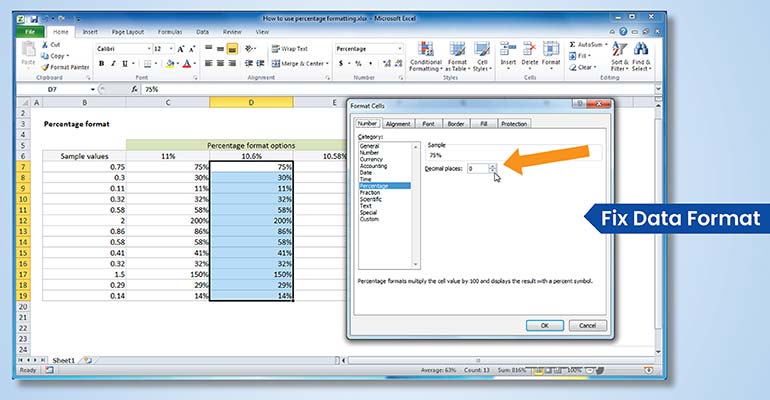
Manual Entry Issue: Inconsistent data formats (dates, phone numbers, addresses) cause confusion and database errors. This hinders reporting, data retrieval, and accurate decision making.
Automated Solution: Data validation and standardization tools use predefined rules to automatically format data entries. Dates are converted to a standard format (e.g., MM/DD/YYYY) using pattern recognition. Advanced logic checks country codes for phone numbers and enforces consistent address formatting. This reduces formatting discrepancies and ensures adherence to predefined standards.
Industry Example: A global e-commerce company faced challenges with employees entering customer data in various formats. By implementing automated validation with formatting rules, phone numbers are normalized to international formats and standardized addresses. This improved data consistency, order accuracy and customer experience. This highlights the critical role of data entry automation in avoiding data entry errors companies should avoid.
Error – 3 Duplicate Data Entries
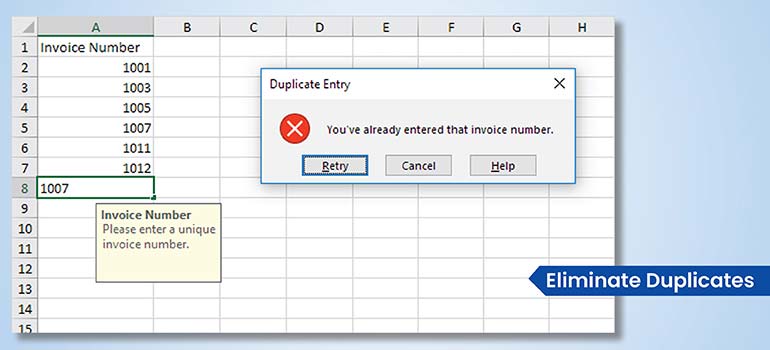
Manual Entry Issue: Duplicate entries occur when multiple employees input the same data or old records are updated without removing outdated information. This leads to data inaccuracies, inefficient retrieval and confusion.
Automated Solution: Robotic Process Automation (RPA) with deduplication algorithms automatically detects and merges duplicate records. Using matching algorithms and fuzzy logic, it identifies duplicates, even with minor discrepancies like spelling variations. The RPA consolidates information into a single, accurate entry and validates incoming data in real time, preventing duplicates at entry.
Industry Example: A large retail company with duplicate customer profiles causing marketing and reporting issues implemented RPA. The system, with real-time deduplication, eliminated redundant customer records using pattern matching to detect and merge duplicates. This improved data accuracy and optimized CRM processes, leading to more effective marketing.
Error – 4 Missing Data Fields
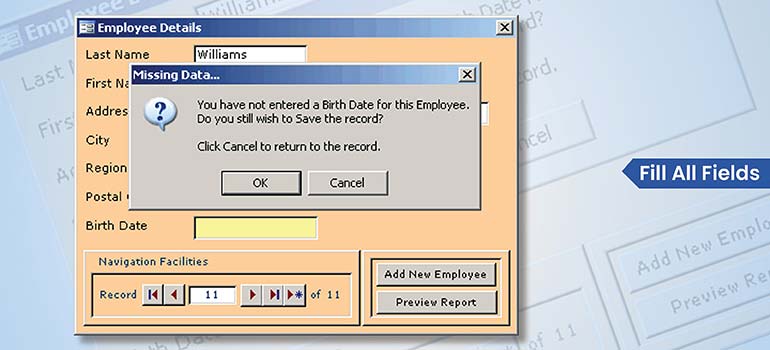
Manual Entry Issue: Missing data fields occur when employees overlook mandatory information like birth dates or contact details during manual data entry. This results in incomplete records, disrupting workflows and hindering decision-making and customer interactions.
Automated Solution: Automated form fillers with mandatory field checks ensure data accuracy and completeness. These systems use form validation logic to highlight and prompt users to fill in missing fields. Advanced solutions integrate with databases to autofill data based on user profiles, reducing manual data entry and errors. Data validation rules further restrict submissions with missing fields, guaranteeing complete and reliable data entries.
Industry Example: A healthcare provider faced challenges with incomplete patient records, causing administrative delays and reporting inaccuracies. By implementing an automated form-filling system with mandatory checks, they ensured crucial fields like insurance information were always completed, enhancing data accuracy and streamlining patient management.
Error – 5 Data Transcription Errors
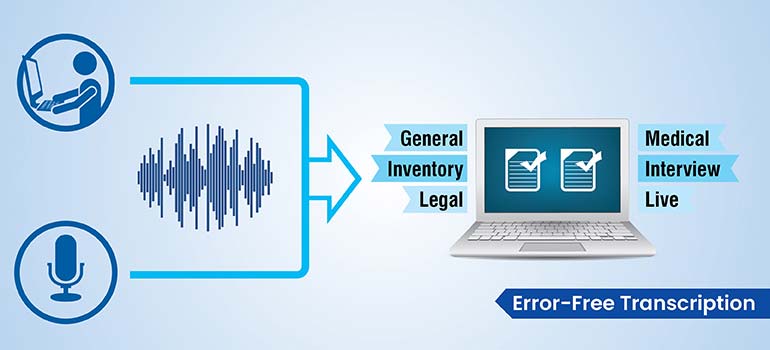
Manual Entry Issue: Data entry errors often occur when manually transferring information, such as handwritten notes or physical documents, into digital systems. This can involve incorrect values, misplaced data or swapped entries, leading to operational inefficiencies.
Automated Solution: AI-powered data capture and transcription tools automate data extraction from various formats, such as PDFs, images and emails. Using OCR and NLP, these tools accurately convert text into digital formats, map data to correct fields and reduce human error. Advanced AI systems can validate transcribed data against existing records for increased accuracy.
Industry Example: A law firm with a high volume of client documents faced data entry errors from manual transcription. By implementing AI-powered data capture tools, they automated the extraction of key information from scanned legal documents, improving data accuracy and processing speed, while reducing manual labor.
Turn to automation and eliminate manual data entry errors!
Contact us now. »Types of Data Entry Automation Techniques and Tools
Businesses today can use various automation techniques and tools to reduce errors, boost efficiency, and enhance data accuracy. Below are the most widely used tools and techniques:
-
Optical Character Recognition (OCR)
Converts printed or handwritten documents into editable digital text.
Key Benefit: Eliminates typographical errors and manual transcription.
Popular Tools: Adobe Acrobat, ABBYY FineReader, Tesseract
-
Robotic Process Automation (RPA)
Automates repetitive data tasks by using software bots.
Key Benefit: Reduces human involvement and common errors like duplicates.
Popular Tools: UiPath, Blue Prism, Automation Anywhere
-
Automated Data Validation
Checks entries against predefined rules to ensure accuracy.
Key Benefit: Prevents incomplete and incorrectly formatted data entries.
Popular Tools: Informatica Data Quality, Talend Data Fabric, Data Ladder
-
AI and Machine Learning (ML) for Data Capture
Analyzes and captures data from unstructured sources like PDFs and images.
Key Benefit: Detects errors and fills in missing data, improving quality over time.
Popular Tools: Amazon Textract, Google Cloud AI, IBM Watson
-
Automated Form Filling and Field Validation
Prepopulates forms and ensures required fields are completed.
Key Benefit: Reduces errors from missing or incorrect data entries.
Popular Tools: Typeform, Zoho Forms, JotForm
-
Data Deduplication Tools
Identifies and removes duplicate entries in datasets.
Key Benefit: Maintains unique records and improves data integrity.
Popular Tools: WinPure Clean & Match, Dedupely, Salesforce Data.com
-
Natural Language Processing (NLP)
Extracts relevant information from text sources like emails.
Key Benefit: Automates entry of unstructured data, reducing manual errors.
Popular Tools: Microsoft Azure Text Analytics, SpaCy, IBM Watson NLP
Steps to Implement Data Entry Automation
To successfully implement data entry automation, it’s essential to follow a structured approach that ensures smooth integration and optimal performance. Below is a visual representation of the key steps:
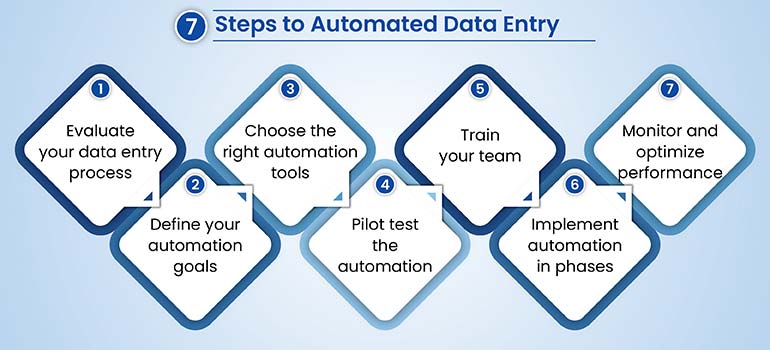
Challenges of Automating Data Entry
Automating data entry is a powerful way to improve accuracy and efficiency, but it comes with challenges. Businesses must navigate the transition from manual to automated processes, ensuring technology integrates with existing workflows. Proper planning, training and support are crucial to overcoming obstacles and maximizing the benefits. Here are some key challenges businesses often face when implementing data entry automation:
- High Initial Setup Costs
- Integration with Existing Systems
- Data Security and Privacy Concerns
- Complexity of Handling Unstructured Data
- Change Management and Employee Resistance
- Ongoing Maintenance and Monitoring
- Over-Reliance on Automation
While automating data entry offers significant benefits in terms of accuracy and efficiency, businesses must be mindful of these challenges. Addressing issues such as high setup costs, system integration and data security requires careful planning. For many, outsourcing data entry to specialized providers can help overcome these obstacles and ensure a smoother transition to automation.
Outsourcing is the Solution to Automated Data Entry
Outsourcing data entry to specialized companies offers several advantages, including access to experienced professionals, reduced operational costs and improved data accuracy. These companies use advanced tools and technologies to handle large volumes of data efficiently while minimizing errors. Additionally, outsourcing frees up internal resources, allowing businesses to focus on core functions.
To ensure a successful partnership with data entry providers, it’s crucial to establish clear communication, set expectations, and outline specific requirements upfront. Regular audits and data quality checks should be conducted to monitor accuracy. Selecting a company with experience in your industry and well-defined security protocols will ensure your data remains protected throughout the process.
Future Trends in Automated Data Entry
As technology evolves, several key trends will shape the future of data entry automation:
- AI and Machine Learning: Predicting errors and adapting to new data formats.
- Natural Language Processing (NLP): Automating data extraction from unstructured sources like emails.
- Cognitive RPA: Managing complex workflows with minimal human input.
- Cloud-Based Solutions: Offering scalability and real-time collaboration for remote teams.
- Blockchain: Enhancing data integrity with secure, immutable records.
- Hyper Automation: Combining AI, RPA, and machine learning to automate entire workflows.
- Voice Recognition: Enabling hands-free data entry, particularly in healthcare.
Conclusion
Data entry errors can have a significant impact on business operations, leading to inaccurate data, inefficiencies and increased costs. However, leveraging automation tools, such as Optical Character Recognition (OCR), Robotic Process Automation (RPA), and AI-driven data validation, can drastically reduce manual errors and improve overall accuracy.
Outsourcing data entry to specialized providers further enhances efficiency and allows businesses to focus on core tasks while maintaining data integrity. As technology evolves, trends like AI integration, NLP for unstructured data, and blockchain for data integrity will continue to revolutionize the data entry landscape, offering businesses even greater opportunities to optimize processes. Embracing these innovations can significantly streamline data entry tasks and enhance business performance.
Avoid manual mistakes with our data automation solutions.
Get Started Now. »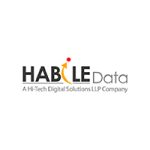
HabileData is a global provider of data management and business process outsourcing solutions, empowering enterprises with over 25 years of industry expertise. Alongside our core offerings - data processing, digitization, and document management - we’re at the forefront of AI enablement services. We support machine learning initiatives through high-quality data annotation, image labeling, and data aggregation, ensuring AI models are trained with precision and scale. From real estate and ITES to retail and Ecommerce, our content reflects real-world knowledge gained from delivering scalable, human-in-the-loop data services to clients worldwide.






